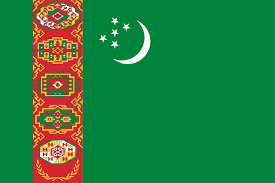Language/Turkmen/Grammar/How-to-Use-Be
Hi Turkmen learners! 😊
In this lesson, we will learn how to use the verb "be" in Turkmen. We will look at the different forms of the verb and how it is used in sentences. We will also look at some examples of how it is used in everyday conversations.
The verb "be" is one of the most important verbs in any language. In Turkmen, it is used to express existence, identity, location, and possession. It is also used to form questions and negative sentences.
The verb "be" has two forms in Turkmen: "bolmak" and "durmak". The form "bolmak" is used for present tense and the form "durmak" is used for past tense.
The verb "bolmak" is conjugated as follows:
| Person | Singular | Plural |
|---|---|---|
| I | bolýan | bolýarys |
| You | bolýaň | bolýaňyz |
| He/She/It | bolýar | bolýarlar |
The verb "durmak" is conjugated as follows:
| Person | Singular | Plural |
|---|---|---|
| I | durdy | durdular |
| You | durdyň | durdyňyz |
| He/She/It | durdy | durdular |
Examples:
- Person 1: Men ýerde bolýan. (I am here.)
- Person 2: Sen näme işleýäň? (What are you doing?)
- Person 1: Men ýazgylary ýazýan. (I am writing notes.)
The verb "be" can also be used to form questions and negative sentences. To form a question, the verb is placed at the beginning of the sentence. To form a negative sentence, the word "däl" is placed after the verb.
Examples:
- Question: Bolýaňmy? (Are you?)
- Negative sentence: Men bolmaýan däl. (I am not.)
To improve your Turkmen Grammar, you can also use the Polyglot Club website. Find native speakers and ask them any questions!
That's it for this lesson on how to use the verb "be" in Turkmen. Now you know how to conjugate the verb and how to use it in sentences. Practice using the verb in conversations and you will soon become a master of Turkmen grammar!
➡ If you have any questions, please ask them in the comments section below.
➡ Feel free to edit this wiki page if you think it can be improved. 😎

